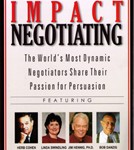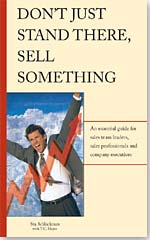 Editor’s note: Steve Coscia is a frequent contributor to this blog.
Editor’s note: Steve Coscia is a frequent contributor to this blog.
During a recent business lunch with a prospective client, I felt that I wasn’t making enough of an impression. I had already listened carefully and learned about my prospect’s company and their operational difficulties. I had shared information about my background, the books I had written and my company’s proprietary training tools.
The conversation was slowing down and we were obviously running out of things to talk about. My prospect was being polite, but I could tell she was as uncomfortable as I was. If we didn’t do something soon, this lunch was going to plunge down into the pits.
Then I took a risk. I got personal. I shared a personal experience with the prospect. I told her that I had traveled to Italy about four years ago to do family research in my grandfather’s village and how I hoped that the material would evolve into another book. I told her about my ancestor’s emigration to the United States about 100 years ago and about how I interviewed my father during the last ten years of his life.
My prospect’s eyes lit up with excitement as I conveyed my family’s adventures and the new information that I had surfaced. Then, my prospect shared a story about one of her employees who had recently been to Ireland to look up her family roots. My prospect insisted that I meet this employee. The conversation reinvigorated with vigor, vitality and colorful stories as my prospect and I really got to know each other.
The prospect is now a client. This client has since referred me to other prospects who I hope to make clients. The referrals keep coming from this one client because she really likes me as a person.
In some business situations, more than acumen and expertise is required. Clients don’t care how much we know until they know how much we care. The things that we are interested in and feel passionate about will enable a person to exude genuine excitement that others want to be part of. C.S. Lewis said that friendship is born when one person says to another, “What you too? I thought that I was the only one.” It’s as simple as that. Building greater rapport with our clients and associates is possible if we are willing and courageous enough to let our guard down.











